Science – Intent:
At North Mead, we believe every child has the right to access their full potential. We strive to provide our children with a broad, relevant, and enriched science curriculum to raise aspirations and provide cultural capital. We believe that building children’s science capital is vital to help broaden both experiences and opportunities for our pupils. E.g., Children in year 3 visit the Think Tank Museum to develop their understanding of rocks, while Year 4 visit Woburn Safari to develop their understanding of Animals including Humans.
Our science intent forms part of our wider curriculum intent: We will provide all of our children with a broad, relevant and enriched curriculum so that they have the character to make a positive contribution to our society and are knowledgeable, skilled and ready for the next phase of their education.
At North Mead Primary Academy, we believe in the importance of science: nurturing curiosity and creativity. Through a combination of investigative skills and practical activities, children will develop an understanding of the world in which we live, the journey of science and its importance for the future.
Science is taught discretely following the National Curriculum.
Our curriculum overview can be found below:
Animals including Humans
- identify and name a variety of common animals including fish, amphibians, reptiles, birds and mammals
- identify and name a variety of common animals that are carnivores, herbivores and omnivores
- describe and compare the structure of a variety of common animals (fish, amphibians, reptiles, birds and mammals, including pets)
- identify, name, draw and label the basic parts of the human body and say which part of the body is associated with each sense.
Plants
- identify and name a variety of common wild and garden plants, including deciduous and evergreen trees
- identify and describe the basic structure of a variety of common flowering plants, including trees
Everyday Materials
- distinguish between an object and the material from which it is made
- identify and name a variety of everyday materials, including wood, plastic, glass, metal, water, and rock
- describe the simple physical properties of a variety of everyday materials
- compare and group together a variety of everyday materials on the basis of their simple physical properties
Seasonal Changes
- observe changes across the four seasons
- observe and describe weather associated with the seasons and how day length varies
Animals including Humans
- notice that animals, including humans, have offspring which grow into adults
- find out about and describe the basic needs of animals, including humans, for survival (water, food and air)
- describe the importance for humans of exercise, eating the right amounts of different types of food, and hygiene
Living Things and their Habitats
- explore and compare the differences between things that are living, dead, and things that have never been alive
- identify that most living things live in habitats to which they are suited and describe how different habitats provide for the basic needs of different kinds of animals and plants, and how they depend on each other
- identify and name a variety of plants and animals in their habitats, including micro-habitats
- describe how animals obtain their food from plants and other animals, using the idea of a simple food chain, and identify and name different sources of food
Plants
- observe and describe how seeds and bulbs grow into mature plants
- find out and describe how plants need water, light and a suitable temperature to grow and stay healthy
Everyday Materials
- identify and compare the suitability of a variety of everyday materials, including wood, metal, plastic, glass, brick, rock, paper and cardboard for particular uses
- find out how the shapes of solid objects made from some materials can be changed by squashing, bending, twisting and stretching
Animals including Humans
- identify that animals, including humans, need the right types and amount of nutrition, and that they cannot make their own food; they get nutrition from what they eat
- identify that humans and some other animals have skeletons and muscles for support, protection and movement
Plants
- identify and describe the functions of different parts of flowering plants: roots, stem/trunk, leaves and flowers
- explore the requirements of plants for life and growth (air, light, water, nutrients from soil, and room to grow) and how they vary from plant to plant
- investigate the way in which water is transported within plants
- explore the part that flowers play in the life cycle of flowering plants, including pollination, seed formation and seed dispersal
Rocks
- compare and group together different kinds of rocks on the basis of their appearance and simple physical properties
- describe in simple terms how fossils are formed when things that have lived are trapped within rock
- recognise that soils are made from rocks and organic matter
Light
- recognise that they need light in order to see things and that dark is the absence of light
- notice that light is reflected from surfaces
- recognise that light from the sun can be dangerous and that there are ways to protect their eyes
- recognise that shadows are formed when the light from a light source is blocked by an opaque object
- find patterns in the way that the size of shadows change
Forces and Magnets
- compare how things move on different surfaces
- notice that some forces need contact between two objects, but magnetic forces can act at a distance
- observe how magnets attract or repel each other and attract some materials and not others
- compare and group together a variety of everyday materials on the basis of whether they are attracted to a magnet, and identify some magnetic materials
- describe magnets as having two poles
- predict whether two magnets will attract or repel each other, depending on which poles are facing
Animals including Humans
- describe the simple functions of the basic parts of the digestive system in humans
- identify the different types of teeth in humans and their simple functions
- construct and interpret a variety of food chains, identifying producers, predators and prey
Living things and their Habitats
- recognise that living things can be grouped in a variety of ways
- explore and use classification keys to help group, identify and name a variety of living things in their local and wider environment
- recognise that environments can change and that this can sometimes pose dangers to living things
States of Matter
- compare and group materials together, according to whether they are solids, liquids or gases
- observe that some materials change state when they are heated or cooled, and measure or research the temperature at which this happens in degrees Celsius (°C)
- identify the part played by evaporation and condensation in the water cycle and associate the rate of evaporation with temperature
Sound
- identify how sounds are made, associating some of them with something vibrating
- recognise that vibrations from sounds travel through a medium to the ear
- find patterns between the pitch of a sound and features of the object that produced it
- find patterns between the volume of a sound and the strength of the vibrations that produced it
- recognise that sounds get fainter as the distance from the sound source increases
Electricity
- identify common appliances that run on electricity
- construct a simple series electrical circuit, identifying and naming its basic parts, including cells, wires, bulbs, switches and buzzers
- identify whether or not a lamp will light in a simple series circuit, based on whether or not the lamp is part of a complete loop with a battery
- recognise that a switch opens and closes a circuit and associate this with whether or not a lamp lights in a simple series circuit
- recognise some common conductors and insulators, and associate metals with being good conductors
Animals including Humans
- describe the changes as humans develop to old age
Living things and their Habitats
- describe the differences in the life cycles of a mammal, an amphibian, an insect and a bird
- describe the life process of reproduction in some plants and animals
Properties and changes of Materials
- compare and group together everyday materials on the basis of their properties, including their hardness, solubility, transparency, conductivity (electrical and thermal), and response to magnets
- know that some materials will dissolve in liquid to form a solution, and describe how to recover a substance from a solution
- use knowledge of solids, liquids and gases to decide how mixtures might be separated, including through filtering, sieving and evaporating
- give reasons, based on evidence from comparative and fair tests, for the particular uses of everyday materials, including metals, wood and plastic
- demonstrate that dissolving, mixing and changes of state are reversible changes
- explain that some changes result in the formation of new materials, and that this kind of change is not usually reversible, including changes associated with burning and the action of acid on bicarbonate of soda
Earth and Space
- describe the movement of the Earth, and other planets, relative to the Sun in the solar system
- describe the movement of the Moon relative to the Earth
- describe the Sun, Earth and Moon as approximately spherical bodies
- use the idea of the Earth’s rotation to explain day and night and the apparent movement of the sun across the sky
Forces
- explain that unsupported objects fall towards the Earth because of the force of gravity acting between the Earth and the falling object
- identify the effects of air resistance, water resistance and friction, that act between moving surfaces
- recognise that some mechanisms, including levers, pulleys and gears, allow a smaller force to have a greater effect
Animals including Humans
- identify and name the main parts of the human circulatory system, and describe the functions of the heart, blood vessels and blood
- recognise the impact of diet, exercise, drugs and lifestyle on the way their bodies function
- describe the ways in which nutrients and water are transported within animals, including humans
Living things and their Habitats
- describe how living things are classified into broad groups according to common
- observable characteristics and based on similarities and differences, including micro-organisms, plants and animals
- give reasons for classifying plants and animals based on specific characteristics
Electricity
- associate the brightness of a lamp or the volume of a buzzer with the number and voltage of cells used in the circuit
- compare and give reasons for variations in how components function, including the brightness of bulbs, the loudness of buzzers and the on/off position of switches
- use recognised symbols when representing a simple circuit in a diagram
Light
- recognise that light appears to travel in straight lines
- use the idea that light travels in straight lines to explain that objects are seen because they give out or reflect light into the eye
- explain that we see things because light travels from light sources to our eyes or from light sources to objects and then to our eyes
- use the idea that light travels in straight lines to explain why shadows have the same shape as the objects that cast them
Evolution
- recognise that living things have changed over time and that fossils provide information about living things that inhabited the Earth millions of years ago
- recognise that living things produce offspring of the same kind, but normally offspring vary and are not identical to their parents
- identify how animals and plants are adapted to suit their environment in different ways and that adaptation may lead to evolution
Year 1 conducted an investigation using transparent, translucent and opaque materials to find out which material would be best to use as curtains to block out sunlight!
Year 3 had lots of fun at the Think Tank Museum, they took part in a rocks workshop and explored some of the museum.
Year 5 have been learning about Earth and Space! They produced some amazing homework!
Subject Leader – Tasleem Sattar

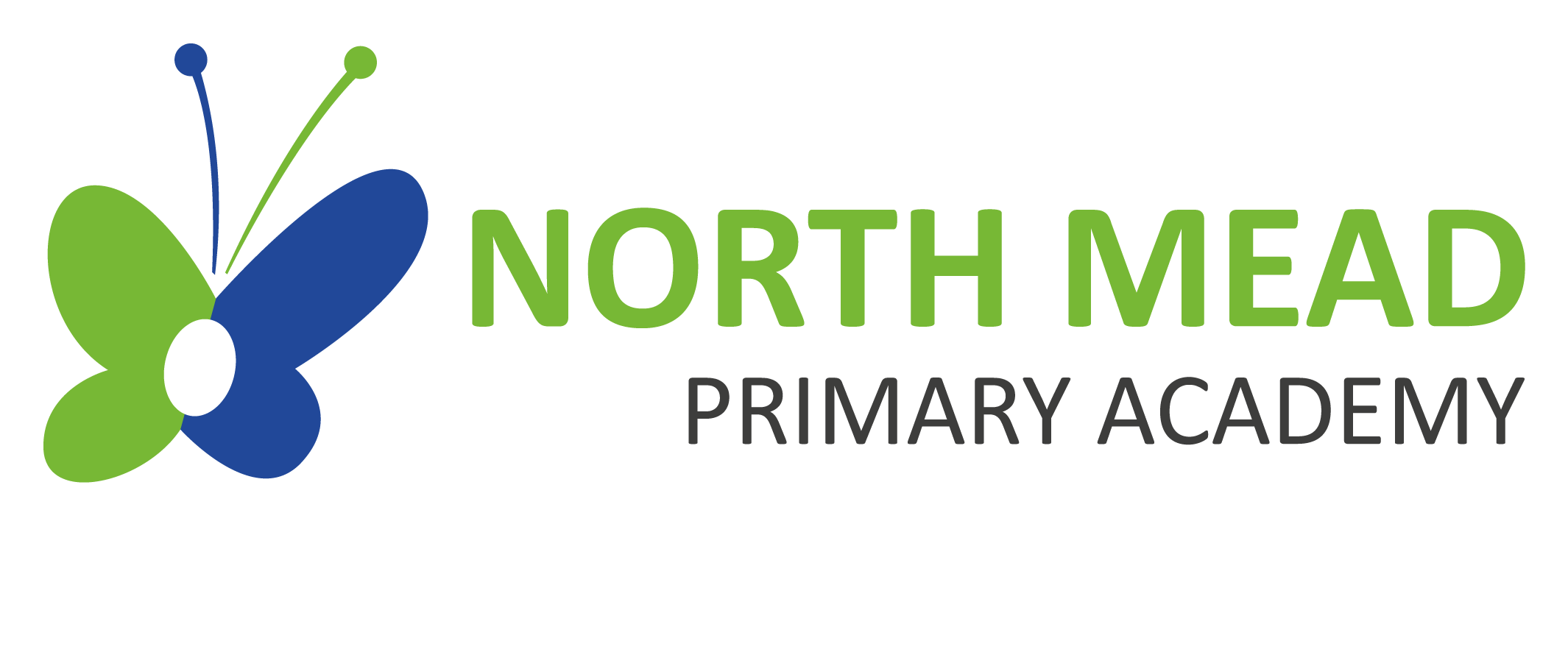
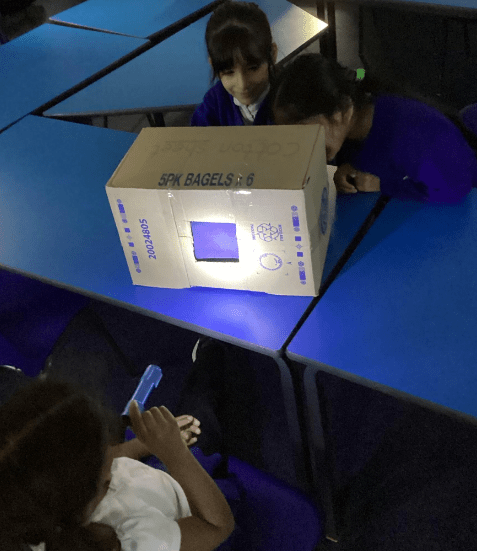






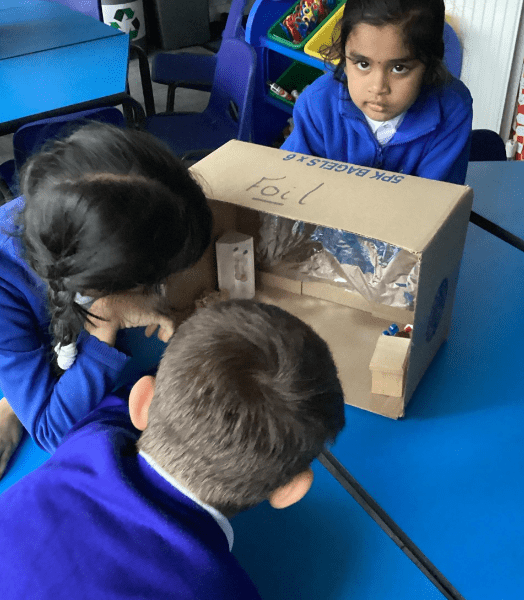
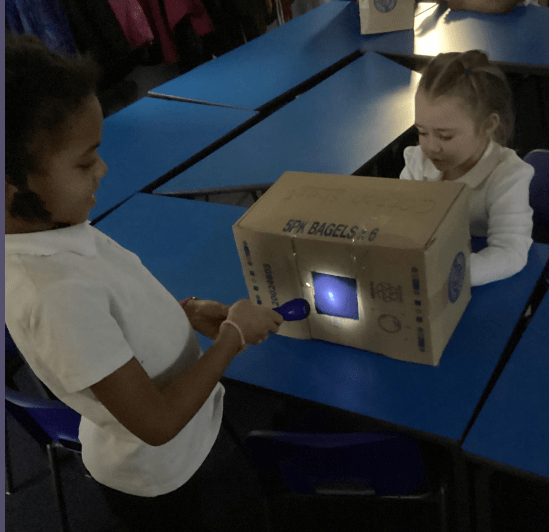
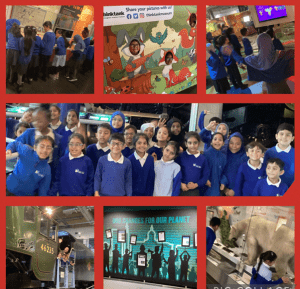
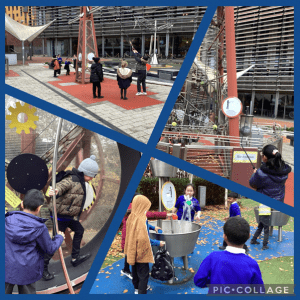
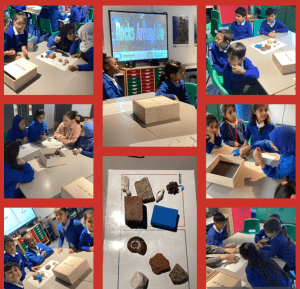
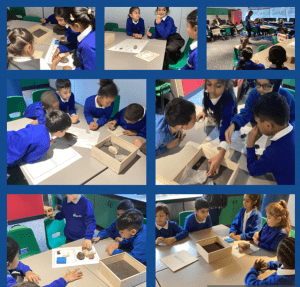
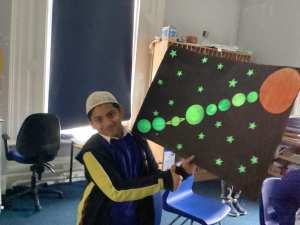
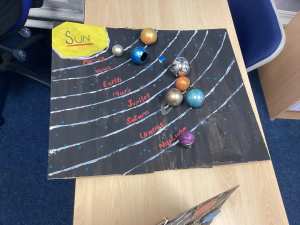
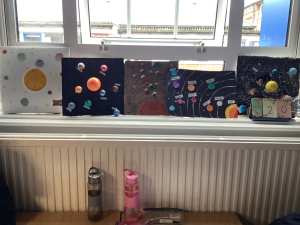
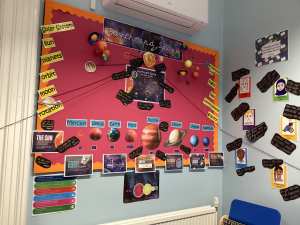
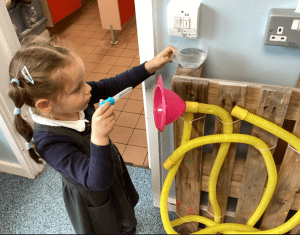
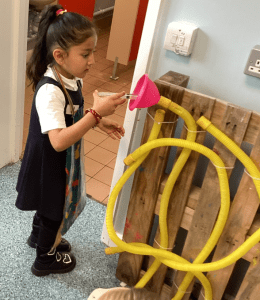

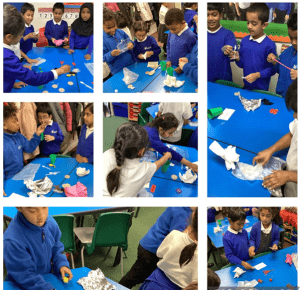
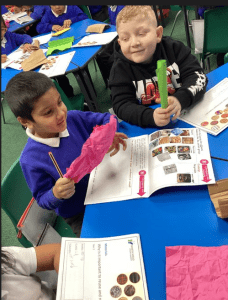
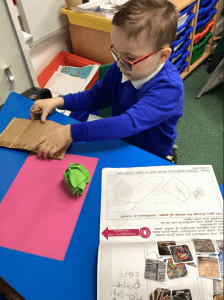
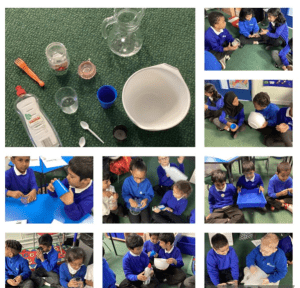

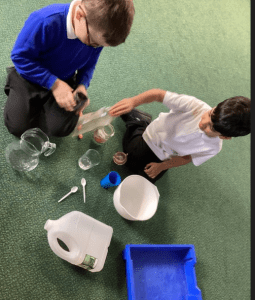
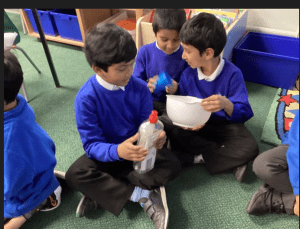
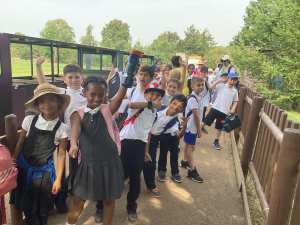
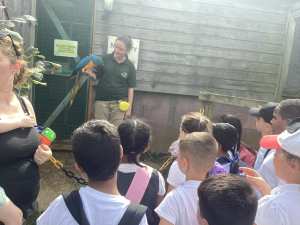
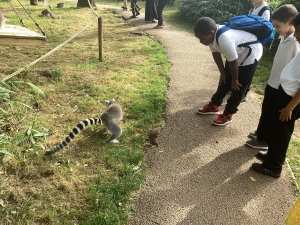
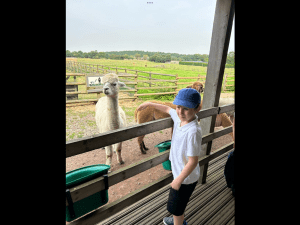
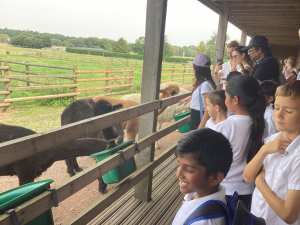
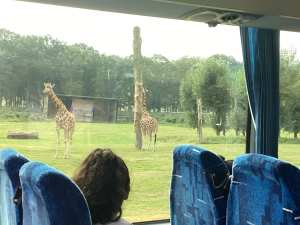
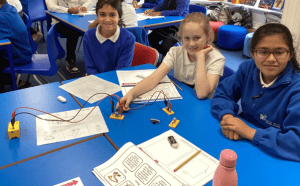
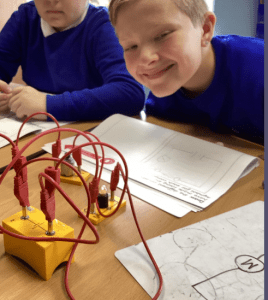
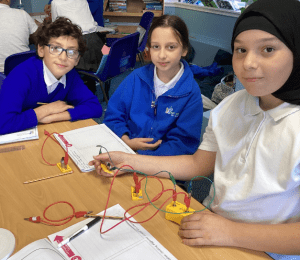
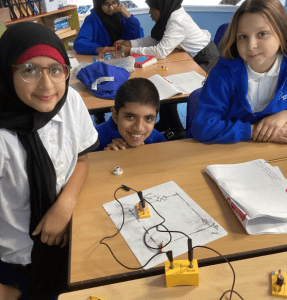
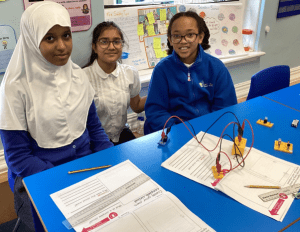
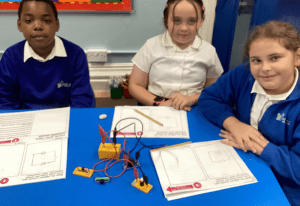
 Together We Make A Positive Difference
Together We Make A Positive Difference